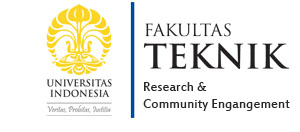| Authors | S. S. Moersidik, R. S. Arifin, E. T. B. Soesilo, D. M. Hartono & Y. Latief |
|---|---|
| Publication Name | WIT Transactions on Ecology and The Environment. WIT Press |
| Abstract | Abstract |
| Publisher | WIT Press |
| ISSN | ISSN 1743-3541 |
| Page | 66-76 |
| Volume | 196 |
| Impact Factor (JCR) | --- |
| SJR | --- |
| Ranking Quartile | Q5 |
| Website | http://www.witpress.com, |
Project portfolio management to increase PDAM Tirtawening’s service coverage area
LATEST POST
CALL FOR PROPOSAL: Penerimaan Hibah Seed Funding Publikasi FTUI 2025
CALL FOR PROPOSAL: Penerimaan Hibah Osaka Gas Tahun 2025
6 Dosen Fakultas Teknik Universitas Indonesia Catatkan 8 Paten
Mahasiswa FTUI Kaji Potensi Hidrogen Alami di Sulawesi, Didorong Jadi Rujukan Kebijakan Nasional
Mahasiswa FTUI teliti potensi hidrogen geologis pertama di Indonesia
POPULAR NEWS
LATEST VIDEOS
LOGIN






